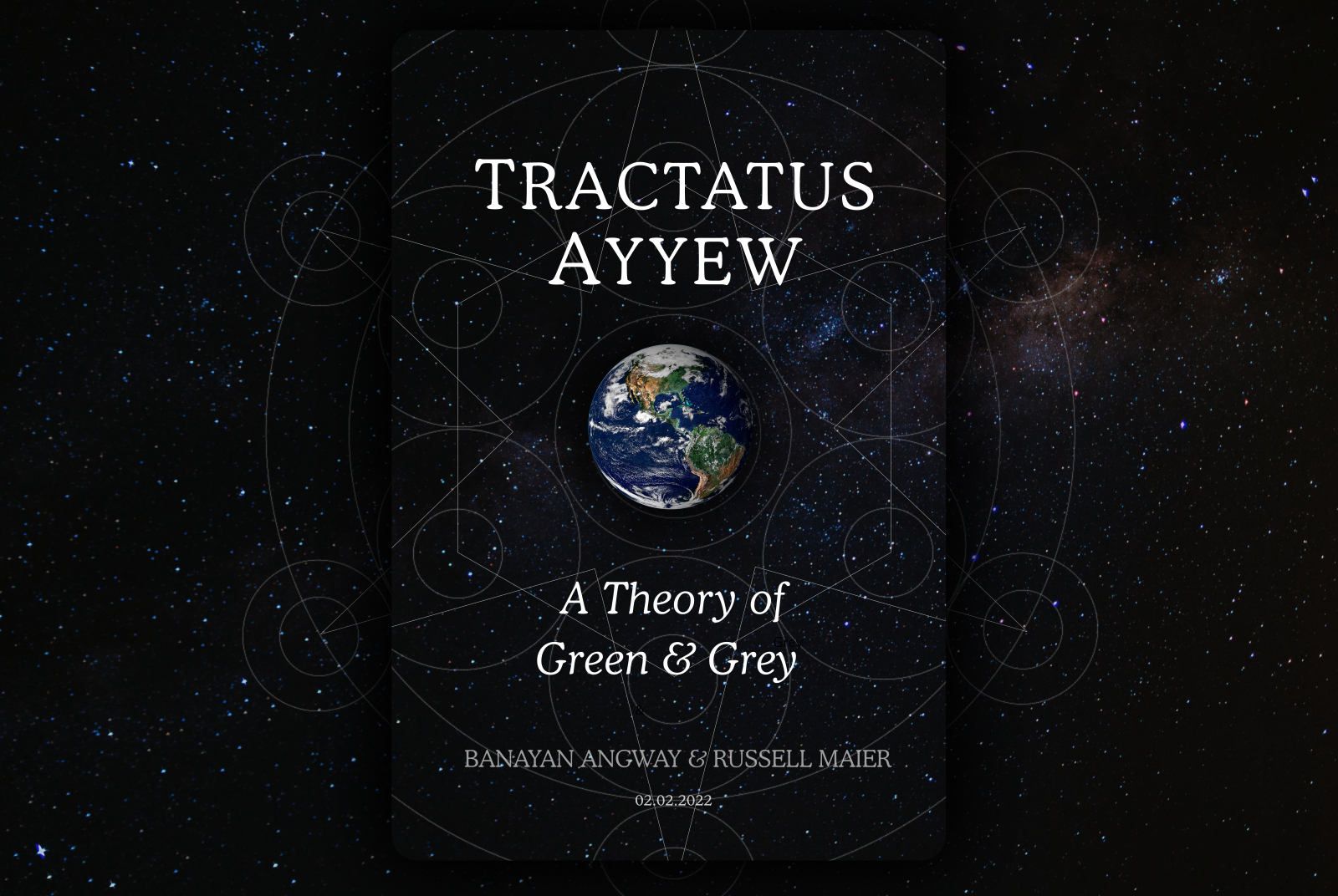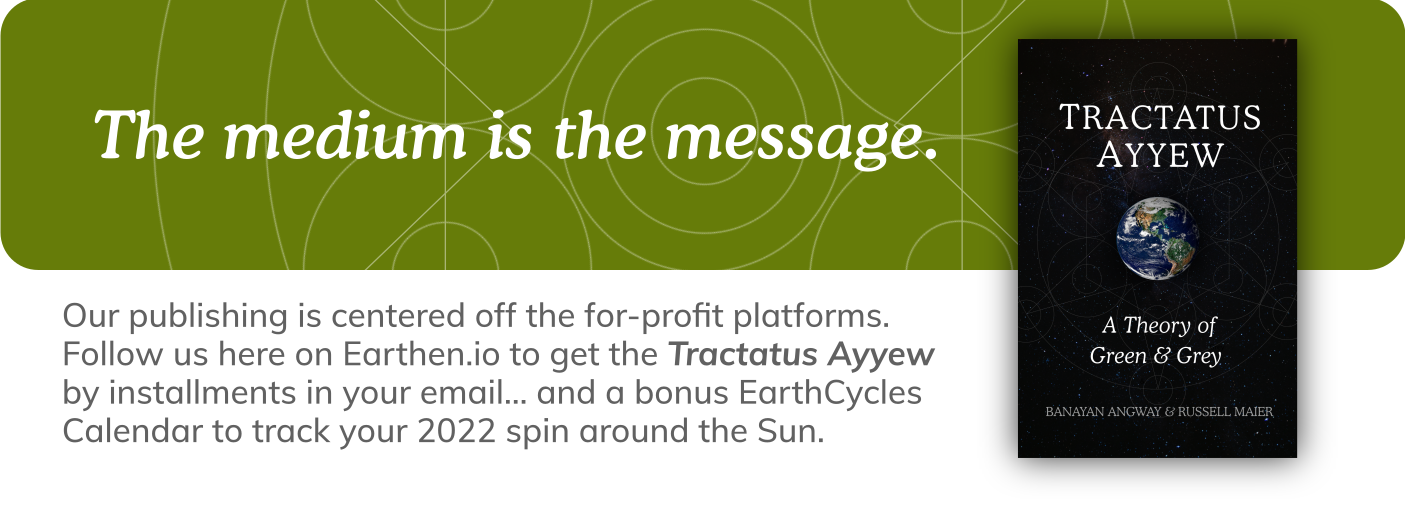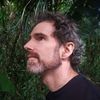The Tractatus Ayyew
The Story of Unlikely Friendship & Philosophy

The Story of Unlikely Friendship & Philosophy
Ten years ago, the people of Kalinga and Bontoc rose up in concern and indignation at the dirty diapers, charred umbrellas and fetid plastic waste spilling into the Chico river. The resulting political crisis led to one of my most unlikely collaborations and a friendships. Despite our vastly different backgrounds, Banayan Angway and I wound up working together to address the local issue of plastic pollution. Little did we know, our little booklet would unite the students and teachers, priests and politicians of the province in common purpose. Not only did the ensuing movement divert tons of plastic from contaminating the river, its success compelled Banayan and I to contemplate the value of the results. How did our particular contribution compare to that of processing plastic industrially? What in fact is an ecological contribution? Our different views of the world have come together over the course of a decade of dialogue, and a framework has emerged to discern ecological service from dis-service– or more succinctly: 'green' from 'grey'. Today we begin to publish the culmination of our collaboration, installment by installment as the Tractatus Ayyew.
Of course, back then, we had no idea that any other currents were coming together other than those of the sullied Chico river.
At the time I was living in the traditional territory of Banayan's people, the Igorots, in the highlands of the island of northern Luzon in the West Philippine Sea. I was acutely aware that plastic pollution had become a major issue for everyone. Down-river, the province of Kalinga was fed up with being the unwitting recipient of it all! In May of 2011, they had begun to sue the up-river villages. In particular, the town of Bontoc.
Of course, while it was an intensely local problem, it was very much a global issue.

As the capital of Mt. Province, one of the Philippine's eighty-one provinces, Bontoc was bumping up against one of the hard realities of the decade: if you're not able to get rid of your plastic and send it somewhere else (read: recycle, incinerate, landfill), then there's no where else for plastic to go but into the environment (i.e. ocean, atmosphere, earth).
The Philippines was already dealing with everything from hospital waste, fashion waste and more arriving from the global north. Being one of the most remote regions of the country there was simply no way to send waste somewhere else. The Chico river was, quite simply, the end of the line for everyone's used-up plastic.
However, my Igorot neighbours and I had been working hard on solutions for our own plastic over the last two years.
We'd tried all sorts of up-cycled handicrafts– mats, tables, bags, purses— many of which we were merrily re-exporting back to the global north. All this was generating a trickle of revenue. However, when it came to practically dealing with the large amounts of plastic produced by a household, we discovered a PET bottle could secure a surprisingly large amount and variety of plastic. These "ecobricks" (as we would later come to call them) were being used in other parts of the global south to deal with similar end-of-the-line situations.
As the legal stand-off in Bontoc intensified, we realized that securing plastic out of the environment was far more vital than making handicrafts. My friend Jed insisted I visit his sister who worked with the department of education. He had the feeling she could help.
Despite our tremendously different backgrounds, Banayan and I immediately hit it off.
An educator-administrator with a background in the study of her people's culture, Banayan was working in Bontoc as the provincial Asst. Schools Division Superintendent. I, with my German-Scottish ancestry and background in western philosophy, was working on using art as environmental innovation.
Quite unlike me, Banayan had a highly bureaucratic job with all sorts of pressing responsibilities!
As the Education Program Supervisor her phone was always ringing as she flew between meetings, while the stacks of reports on her desk never seemed to diminish. However, her passion to see that her people received the best possible education always cut through. Because of her extensive travels to hundreds of remote schools throughout the area, she quickly recognized the value of what Jed and I were only slowly figuring out.
And she saw the bigger context.
Plastic was an issue. But even more so was the widespread ignorance of modern food consumption— the snacks and beverages that were, of course, one of the main sources of the problematic of plastic!
Modern consumption was jarringly new to Igorot society. Igorots were still struggling with how to make sense of the manufactured foods and materials making their way into their communities. Up until the last several decades, the Igorots had never encountered a material that did not fit back harmoniously into the cycles of life around them.
Nor for that matter, foods that made them sick.
Banayan explained that folks, young and old, were precariously unaware of the dangers of high-sugar, low-nutrient foods. Likewise, folks were unaware that the fumes from burning plastic were poisonous, that plastic in water contaminated and that plastic in the sun broke down into a dangerous dust.
It made sense to me when I realized that just as folks in the global north were unaware that their used bottles, syringes and clothing was ending up in the Philippines, the Igorots simply did not realize that their food and plastic was harming their children and the river.
Banayan helped me see that was key wasn't so much solving plastic as a material, but rather raising the awareness of the issues looming dark and deep under the surface of plastic. She explained that in her Igorot view of the world, there is no such thing as "waste". Instead, the Igorots have a concept called ayyew, in which every material presents an opportunity to make things better.
Like a sailor spotting the tip of an iceberg on the surface of the sea, it was key to see plastic not as 'waste', but rather for what it truly was. No matter how practical it was to pack plastic waste into a bottle-brick, the effort was futile if it didn't confront the general ignorance about plastic itself. Only by understanding plastic's origins, its positive and negative properties, could we ever hope to not just mitigate its harm, but to actually make things better.
With Banayan's insistence, we came up with a booklet that described the dangers of modern foods and of plastic improperly managed. We described how to make an ecobrick with one's plastic, and how to put it to use to build school gardens to grow food locally.
In this way, we were able to channel all the concern about plastic pollution to address the deeper roots of the crisis: the perils of modern processed food and the petro-chemical origins of plastic.
But rather than start with a few schools, Irene jump-started the spread to over 240! My friends and I had to scramble to make thousands of photocopies that week.
Dealing with junk food and plastic waste resonated deeply with Gag-gag-ay Di Dumap-ay (the body of elected student leaders) who began to champion ecobricking in their schools. Soon afterwards, visiting the local mayor's office I found him and his staff ecobricking. The bishops and priests joined in, mobilizing their congregations and the entire provincial diocese to build a Church with them.
With unprecedented support between Catholic and Anglican Churches, the local mayor and the governor, students and their teachers Banayan and Regional Director Ellen Donato saw ecobricking off to another 1000 schools in the rest of the province. School gardens began to proliferate, Churches and homes began to build with adobe and ecobricks. Dumpsites began to dwindle.
We scrambled to get a website up to meet all the interest. Pi Villaraza, an initiator of the Filipino ecovillage movement was passing through at the time. With his guidance, the full focus of ecobricks became 'food forest play parks' – school gardens filled with edible plants that taught permaculture principles.
The undersecretary of education, Alberto Muyot, deeply despised the scourge of sugar drinks harming Filipino students. He loved the program. Consulting with Banayan and I, ecobricking was launched to another 10,000 schools that year.
Videos of the spread received tens of millions of views. A re-cut of our Vision Ecobricks video by a social media house received 50+ million views. Then, in 2016 and 2019 ecobricks went viral in Indonesia and the UK.
And we've been trying to keep up ever since!

Back in Bontoc, as parents joined in the packing process school ecobricking and gardening soon it became a family affair. Banayan observed that the home habit fortified the community's collective resolve. As a vocal women's group joined the students and church in ecobricking and lobbying, the Bontoc river dumpsite was officially shut down. That year, a general eupheuria prevailed at seeing the streets free of plastic and knowing that one was playing a part.
Plastic remains an ongoing issue as always in Mt. Province. Hover, according to DepEd's monitoring of ecobricking across the province, ecobricking continues to prevent countless of tons of plastic out of the fields, forests and rivers of the Northern, Philippines and countless Igorot students learned about the dangers of plastic.
And just as significantly, the world got a peak of the power of indigenous wisdom applied to a modern predicament.
The ayyew spirit of the Filipino ecobricking genesis went on to add a new depth of principle to the global ecobricking and plastic transition movements.
It was a profound experience for both Banayan and I. On my side, our dive into plastic was an awakening to the shallowness of western design and environmental ethics. On Banayan's side, it was an awakening to the profound modern relevance of Igorot ecological insight.
But our work was far from over! In fact, little did we realize, it had just begun.
Banayan went on to deepen her work with the department of education. Working with the council of elders of the various tribes of the province and DepEd personel at all levels, she presided over the development of the Igorot Indigenous People’s Education Curriculum. The curriculum applied the Ayyew concept further to provide a framework for Igorot students to make sense of other modern issues .
As she shared her work with me, I became ever more aware that modern environmental ethics lacked anything like the ecological ethos of Ayyew. In fact modern human-centered attempts at "sustainability", "zero-waste", "circular", "net-zero" and "green" seemed decidedly empty and counter productive in comparison.
The deeper I dived into these issues, the more I realized that in our modern world we lacked a comprehensive framework to make sense of what green should really mean.
And the more I found myself consulting with Banayan about Igorot ecological insights!
Over the last two years, our chats have intensified. Short essays evolved into long ones. Chapters emerged. Structure coalesced. And, a paradigm-shattering ecological theory began to take form out our polarities of east and west, north and south.
Inspired by the Igorot ethos, our theory moves onwards from the old human-centered ethics of right and wrong, good and bad. Instead we propose a cycle-centered ethics of green and grey based on the Earth's example. It is theory of that today we're excited to begin publishing under the title the Tractatus Ayyew.
The title is a combination of Latin and Kankanaey (the language of the Igorots). The title symbolizes the balanced confluence of the two long disparate cosmologies that underlie each language– the coming together of which our friendship and theory represents. Tractatus refers to a philosophical treatise, that in the tradition of Spinoza and Wittgenstein, lays out a systematic exposition of a particular theory to supersede an antiquated paradigm. Ayyew refers to the virtue of cyclic ecological integration that guides the culture of the Igorot people, and which underlies the theory of green and grey that we lay out.
We will be posting the contents of the first book, chapter by chapter, post by post, over the next weeks here on Earthen.io




